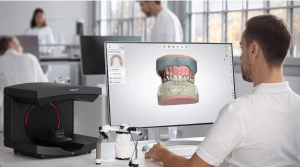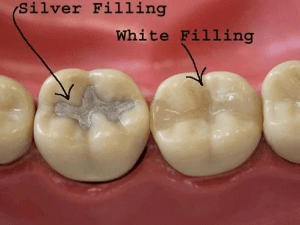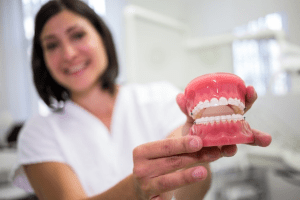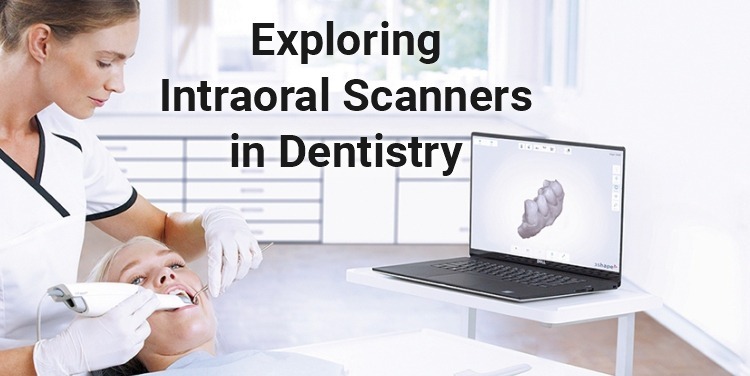How Dental CAD/CAM Technology is Revolutionizing Dental Restorations
In the fast-paced world of dentistry, technological advancements have played a pivotal role in transforming dental procedures and improving patient outcomes. Dental CAD/CAM (Computer-Aided Design/Computer-Aided Manufacturing) technology is a ground breaking innovation. In this blog, we will explore the fascinating realm of CAD/CAM and how it revolutionizes dental restorations, making them more efficient, precise, and patient-friendly.
Understanding CAD/CAM Technology
To begin our journey, let’s first understand what CAD/CAM technology entails. CAD/CAM is a digital system that combines computer software and hardware to facilitate the design and fabrication of dental restorations. It has become an integral part of modern dentistry, allowing dental professionals to create high-quality dental prostheses with greater accuracy and speed.
What is CAD/CAM Technology?
CAD/CAM technology is a comprehensive digital system used in modern dentistry to streamline the process of designing and manufacturing dental restorations. It involves using specialized software and hardware that work together seamlessly to create high-quality dental prostheses, such as crowns, bridges, veneers, and implant restorations.
The CAD Component
The CAD component of CAD/CAM technology stands for Computer-Aided Design. It involves using advanced software to create a digital 3D model of the dental prosthesis. The dentist or dental technician can customize this digital model to meet the patient’s specific needs and aesthetic preferences. The CAD software offers a range of tools and features to ensure precise design, including virtual tooth libraries, occlusion analysis, and natural tooth colour matching.

The CAM Component: The CAM component of CAD/CAM technology stands for Computer-Aided Manufacturing. Once the digital design is finalized, the CAM software converts the virtual model into a physical dental prosthesis. This is done using various cutting-edge manufacturing techniques, such as milling or 3D printing. The CAM software provides precise instructions to the manufacturing hardware, guiding it to create the restoration with exceptional accuracy and detail.
Understanding Dental Restorations: Dental restorations refer to the procedures to replace or repair damaged or missing teeth. They are crucial for restoring oral health, function, and aesthetics. We will explore the different types of dental restorations available and their applications in addressing various dental conditions. Additionally, we will guide you through the step-by-step dental restoration process, highlighting the key considerations at each stage.

Types of Dental Restorations: Dental restorations come in various forms, tailored to meet specific dental needs. Here are some common types of dental restorations:
Fillings: Fillings are used to repair cavities caused by dental decay. They are typically made of composite resin or amalgam and placed directly into the affected tooth to restore its structure and function.

Crowns: Dental crowns, also known as caps, are custom-made restorations that cover the entire visible portion of a damaged tooth. They provide strength, protection, and aesthetic improvement to teeth undergoing extensive decay, fractures, or root canal treatment.

Bridges: Dental bridges replace one or more missing teeth by bridging the gap between two adjacent teeth. They consist of artificial teeth (pontics) anchored to the neighbouring teeth, known as abutments. Bridges restore both the appearance and functionality of the missing teeth.

Dentures: Dentures are removable prosthetic devices used to replace multiple missing teeth. They can be either partial dentures, which replace some missing teeth while preserving existing natural teeth, or complete dentures, which replace all teeth in an arch.

Dental Implants: Dental implants are a revolutionary solution for replacing missing teeth. They involve the surgical placement of a titanium implant into the jawbone, which serves as an artificial tooth root. An implant-supported crown, bridge, or denture is attached to the implant, providing a durable and natural-looking restoration.

The Dental Restoration Process: The dental restoration process involves several stages, each crucial in achieving optimal results. Here’s a step-by-step overview:
Diagnosis: The dentist evaluates the dental condition, identifies the need for restoration, and formulates a personalized treatment plan.
Preparation: The affected tooth or teeth are prepared by removing the decay, shaping the structure, or extracting if necessary.
Impression: An impression or digital scan accurately mold the prepared tooth or teeth. This mold serves as a guide for fabricating the restoration.
Fabrication: The dental repair, whether a filling, crown, bridge, denture, or implant, is created in a dental laboratory or through advanced CAD/CAM technology.
Fitting and Adjustment: The restoration is placed in the mouth, and the dentist ensures a proper fit and occlusion. Adjustments may be made to achieve optimal comfort and functionality.
Final Placement: Once the restoration is perfected, it is permanently bonded or affixed to the tooth or teeth, restoring their function, aesthetics, and strength.
Advantages of CAD/CAM Technology in Dental Restorations:
Now, let’s uncover the remarkable advantages that CAD/CAM technology brings to dental restorations. The benefits of incorporating CAD/CAM in dental practices are manifold. We will discuss how this advanced technology enhances precision, accuracy, and efficiency in fabricating dental prostheses. Furthermore, we will evaluate different CAD/CAM setups to determine the most reliable and advanced options.
Enhanced Precision and Accuracy: One of the most significant advantages of CAD/CAM technology in dental restorations lies in its unparalleled precision and accuracy. With CAD/CAM, dental professionals can achieve meticulous and detailed designs, ensuring the final restoration’s perfect fit and optimal functionality. The digital workflow allows for precise measurements, precise virtual tooth libraries, and advanced occlusion analysis, all contributing to superior accuracy in restoration creation.
Efficiency in Fabrication: CAD/CAM technology streamlines the fabrication process, significantly reducing the time required to design and manufacture dental restorations. Unlike traditional manual methods, which often involve multiple appointments and time-consuming laboratory work, CAD/CAM allows for same-day repairs.
Dentists can now offer their patients the convenience of receiving their final restoration in just one visit. This enhanced efficiency saves time for dental professionals and patients and improves overall treatment satisfaction.
Customization and Aesthetics: CAD/CAM technology offers extensive customization options, allowing dental professionals to achieve optimal aesthetics in dental restorations. The advanced software enables natural tooth colour matching, texture replication, and personalized design modifications. This level of customization ensures that the final restoration blends seamlessly with the patient’s natural dentition, resulting in a beautiful and natural-looking smile.
Improved Patient Experience: Integrating CAD/CAM technology in dental practices enhances patient experience. By reducing the number of dental visits required for restorations, patients spend less time in the dental chair, minimizing discomfort and anxiety. CAD/CAM technology also eliminates the need for messy and uncomfortable impression materials, replacing them with digital scans that are both accurate and patient-friendly. Patients appreciate the convenience and efficiency CAD/CAM technology offers, resulting in higher satisfaction levels.
Reliable and Advanced CAD/CAM Setups: As CAD/CAM technology evolves, dental professionals can choose from various reliable and advanced setups. These setups offer different features and capabilities, allowing dentists to select the system that best suits their specific practice needs. The options are diverse and constantly improving, from chairside milling machines to in-house dental laboratories equipped with cutting-edge CAD/CAM technology.
Benefits of CAD/CAM in Dental Restoration: The benefits of CAD/CAM in dental restoration go beyond the technical aspects. We will explore how this technology positively impacts both dentists and patients. From improved patient experience and reduced chair time to enhanced communication and treatment planning, CAD/CAM streamlines the entire therapeutic process. We will highlight these advantages and their significance for dental professionals and patients.
Improved Patient Experience: CAD/CAM technology significantly enhances the patient experience during dental restoration procedures. With CAD/CAM, patients benefit from reduced chair time, as restorations can often be created and placed in a single visit. This eliminates the need for multiple appointments, reducing patient inconvenience and minimizing discomfort. Patients appreciate the efficiency and convenience offered by CAD/CAM, resulting in higher satisfaction levels and improved treatment outcomes.

Reduced Treatment Time: Traditional dental restoration methods involve time-consuming laboratory work, requiring patients to wear temporary restorations while waiting for their final repairs to be fabricated. CAD/CAM technology eliminates the need for temporary restorations, as the digital design can be sent directly to the milling machine or 3D printer for immediate fabrication. This streamlined process saves valuable time for both dentists and patients, enabling faster treatment completion and quicker restoration placement.
Enhanced Communication and Treatment Planning: CAD/CAM technology improves communication between dentists, dental technicians, and patients. Through digital scans and virtual 3D models, dentists can clearly and precisely communicate treatment plans and proposed restorations to patients. Patients can better understand their treatment options and actively participate in decision-making. Additionally, CAD/CAM allows for efficient collaboration between dental professionals, ensuring accurate and personalized restorations that meet patients’ needs and expectations.
Improved Accuracy and Fit: One of the most significant advantages of CAD/CAM technology is dental restorations’ enhanced accuracy and fit. The digital design process allows for meticulous measurements and precise customization, resulting in repairs that fit snugly and comfortably in the patient’s mouth. The elimination of manual fabrication errors and inconsistencies ensures optimal marginal integrity, reducing the risk of complications and enhancing long-term restoration success.
Advanced Aesthetics: CAD/CAM technology enables dental professionals to achieve exceptional aesthetic outcomes in dental restorations. The advanced software provides customization options for natural tooth colour matching, texture replication, and personalized design modifications. Dentists can create restorations that seamlessly blend with the patient’s natural dentition, resulting in beautiful and natural-looking smiles. Patients benefit from improved aesthetics, boosting their confidence and satisfaction.
Conclusion
In conclusion, CAD/CAM technology has revolutionized the field of dental restorations, elevating the standards of precision, efficiency, and patient satisfaction. With its ability to produce accurate and aesthetically pleasing dental prostheses, CAD/CAM has become an indispensable tool in modern dentistry. Dentists and dental students, both experienced professionals and aspiring learners, can harness the power of this technology to provide exceptional dental care and achieve outstanding results.
Remember, embracing CAD/CAM technology is not just a trend; it is a gateway to transforming the future of dental restorations. Stay ahead of the curve and unlock the full potential of your dental practice by embracing this remarkable technological advancement.





Leave a comment